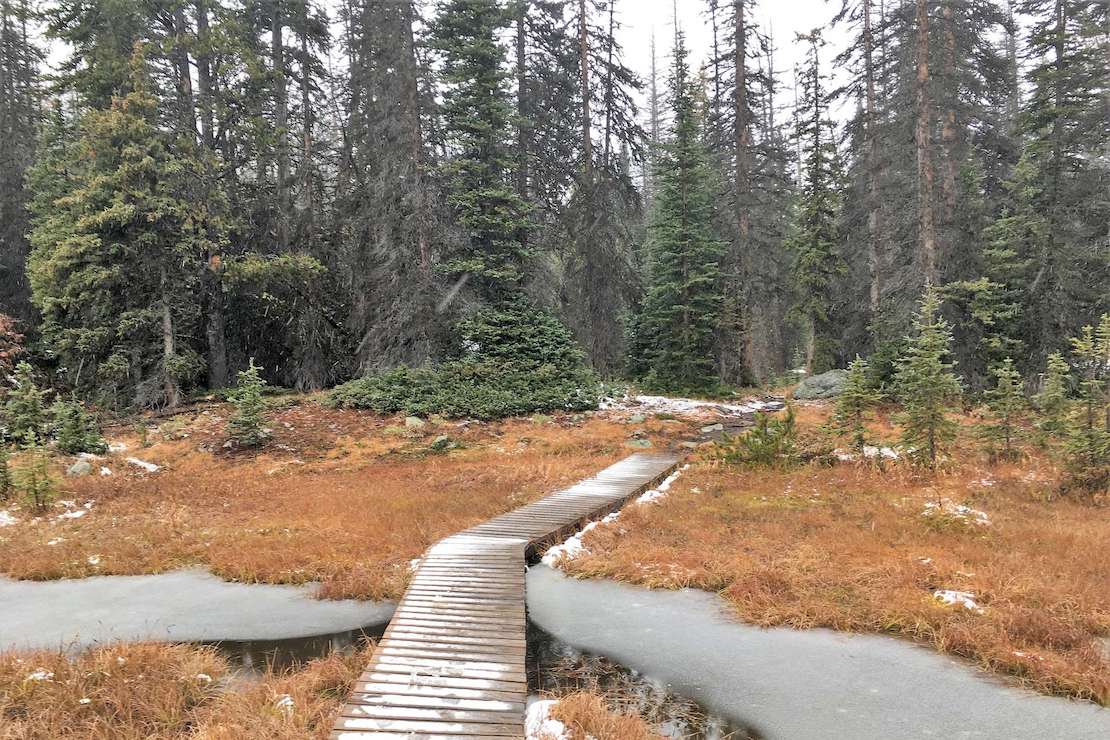Theme 1. Identify priority lands for enhancing protected area connectivity
Projects in this category will support the identification of future refugia and connectivity pathways for key species across BC’s land base. Future habitat corridors may already exist in our protected area system and warrant additional management attention. Alternatively, mapping the connectivity corridors and future refugia for key species among and between BC’s protected area system is also critical to ensuring ecological climate resilience for the province.
Examples of priority projects
- Develop and evaluate systems and approaches for improving ecosystem connectivity between or within protected areas
- Improve tools and cooperative approaches for multi-stakeholder environments to benefit from landscape connectivity in a manner that will benefit BC’s protected areas system
Theme 2. Assess key vulnerabilities in the park system
Projects in this category will support the management of key vulnerabilities to climate change within the protected area system. While protected areas buffer against climate change impacts in providing refuges for ecosystem recovery and for preserving systems that are sensitive to disturbance, they are vulnerable to climate change too. Protected areas are established with fixed boundaries but contain species, communities and ecosystems that can shift spatially in response to climate change.
Examples of priority projects
- Assess BC’s protected area system as a natural solution to climate change
- Understand the implications of wildfire (prescribed or natural ignition) on invasive species encroachment
- Identify climate-related conservation requirements for key at-risk species in BC parks and protected areas (for example, bank swallows at Windermere Lake Provincial Park)
- Identify climate-related impacts and how they will influence the effectiveness of the park system to protect ecosystems such as old growth forests
- Assess shoreline sensitivity and sea level rise risks for coastal protected areas and implications for conservation, recreational and cultural values
- Assess vulnerabilities at regional park scales or for a subset of parks - include consideration of impacts to ecological, cultural and recreational values, as well as the potential socio-economic factors such as impacts to facilities and/or spin-off effects for local communities
- Conduct hydrological analysis of activities upstream of protected areas to reflect the implications of a changing climate
- Model the effect of changing winter conditions on recreational use and the economic viability of facilities in provincial parks with high levels of winter use, such as Garibaldi, Cypress, and or Mount Seymour provincial parks
- Investigate the impacts of climate change on coastal ecosystems, particularly the intertidal zone (for example, changing risks of red tide or productivity of harvestable species)
Theme 3. Climate change adaptation and mitigation operational policies and best practices for protected areas
Projects in this category will support changes to operational management of BC Parks that are consistent with a response to a changing climate. Site-specific challenges such as building shoreline resistance require practical policies and best practices.
Examples of priority projects
- Support the identification and sourcing of region-specific seed mixes appropriate for restoration of parks and protected areas in our changing climate
- Develop guidance for alluvial fan protected areas (for example, Tsútswecw and Shuswap Lake Provincial Parks), such as how to mitigate high water events and support off channel fish spawning and rearing habitat
- Identify best practices for building shoreline resilience to sea level rise within protected areas
- Support application of the Climate Change Adaptation Framework for Parks and Protected Areas in a provincial parks or protected areas
- Identify opportunities for federal, provincial, and First Nations coordination for protection of marine and coastal biodiversity in light of climate change effects
